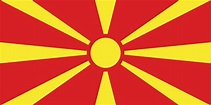
Leaving Tirana, we climb forested hills once more heading towards the North Macedonian border. Here we are one thousand metres above sea-level and the sunny North Macedonian flag is flying, its sun’s rays spreading on a red background. A happy flag.
We descend to Lake Ohrid and our hotel on its shores for the night. Not a bad room. Great view over the lake from my window and ravishing sunset.
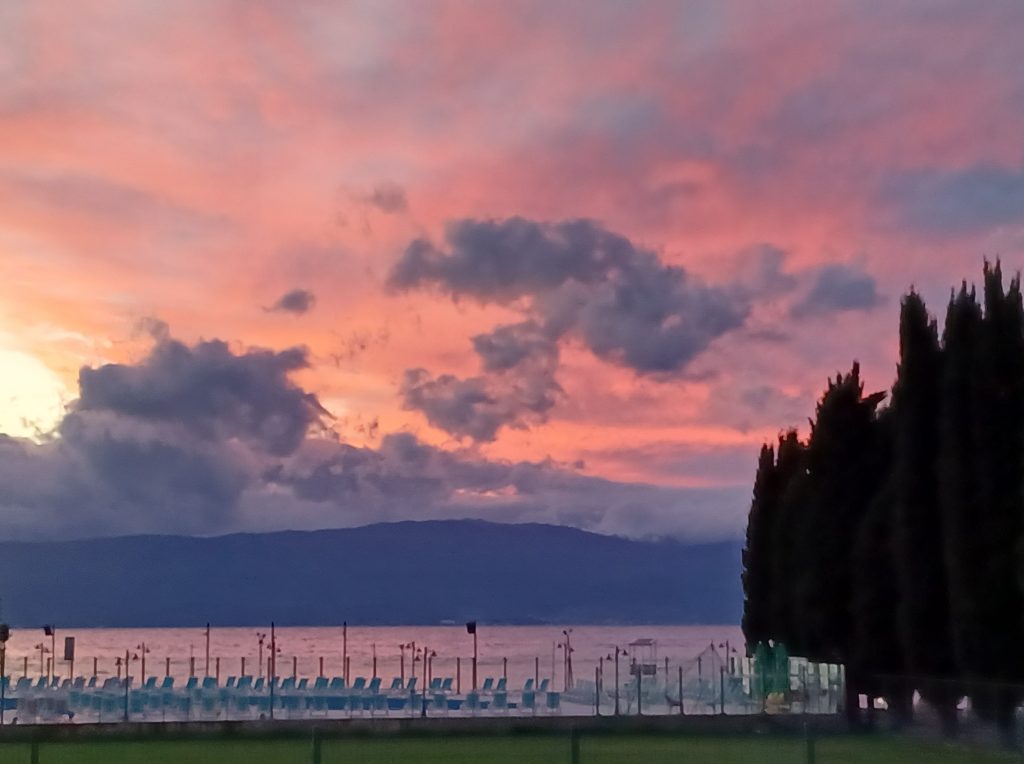
A traditional dinner is on the agenda for this evening. Most of the group take part. I don a skirt, a brightly coloured one. It suits the atmosphere. Musicians: a saxophonist, accordionist, cellist, violinist and drummer, along with dancers in traditional dress, entertain us while we scoff meats and local beans served in big earthenware dishes, washed down with Vranac. Atmospheric venue and all very jolly.
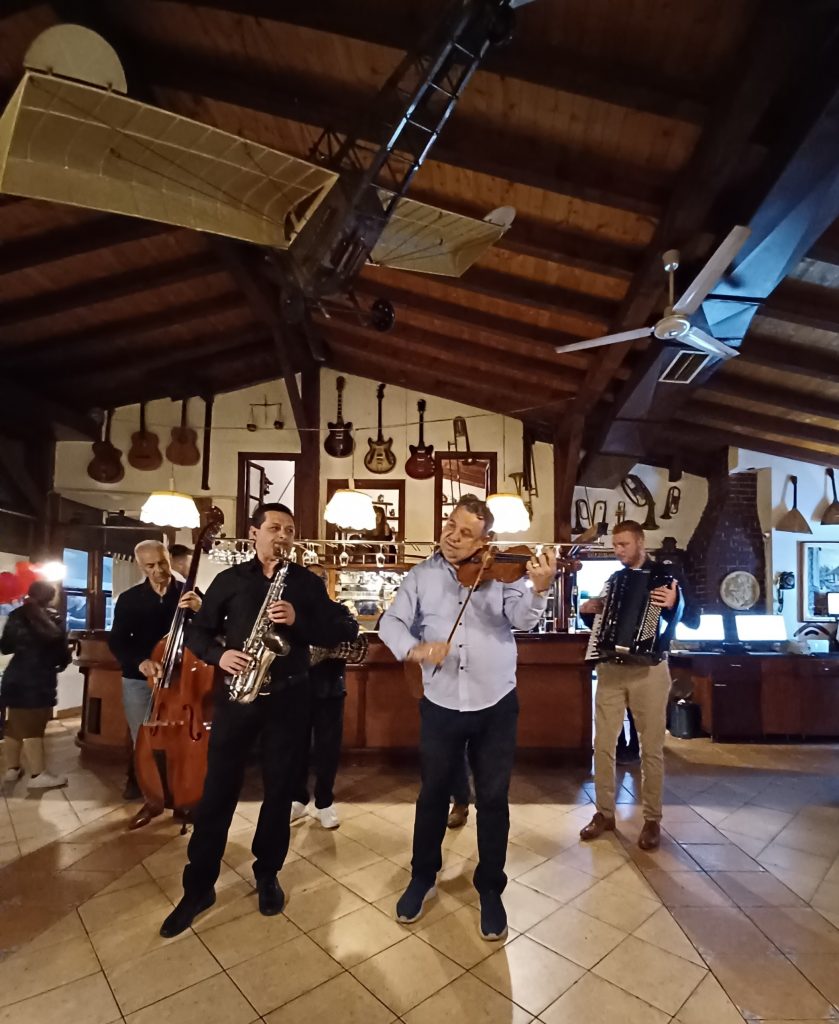
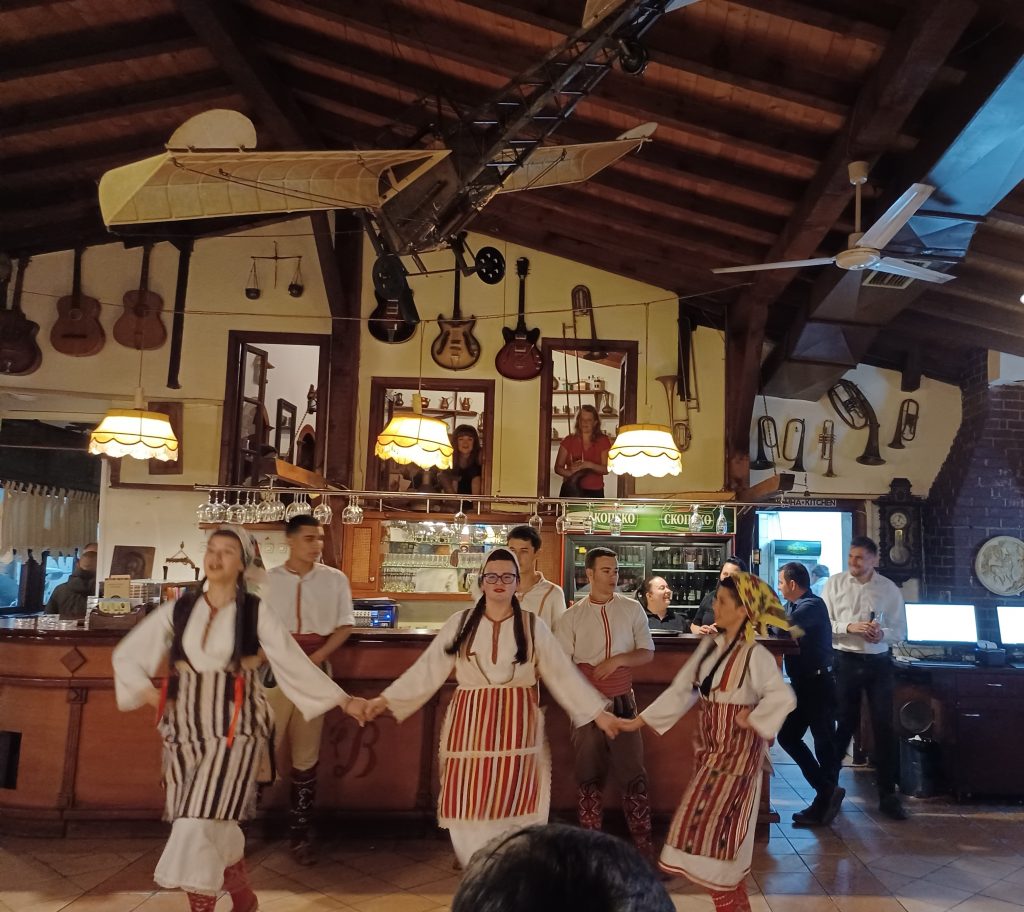
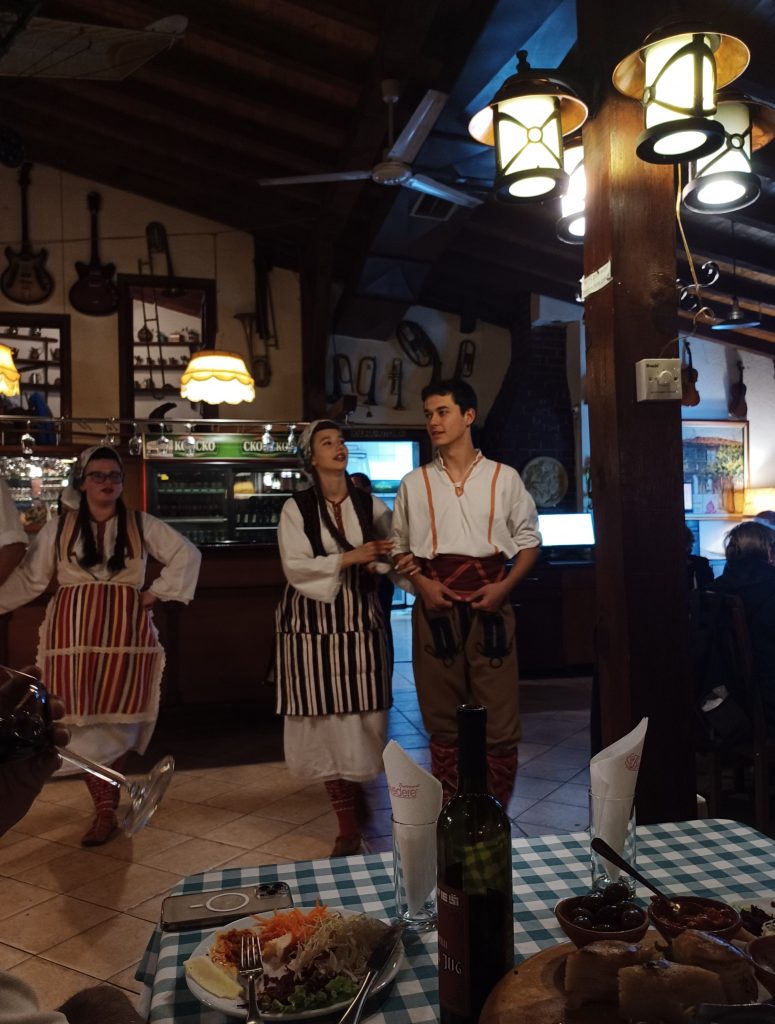
St Naum Monastery
One of the tour highlights, as far as I am concerned, is the trip today to the Eastern Orthodox Monastery of Sveti Naum (St Naum) way across the steep sinuous roads above the lake. We are the first coachload of visitors to arrive and wander in a light drizzle along a long lane lined with souvenir shops and cafés. There are springs here, named the Black Drim springs, which form a small pool. This is the pool where Narcissus fell in love with his own refection, the local guide informs us. Also why the location was chosen by St Naum, and his contemporary St Kliment (Clement), for a monastery established in 905. Doubtful about Narcissus being here. Greek myth. Good story. The two monks, though, were real enough. They were followers of Saints Cyril and Methodius and helped spread Christianity amongst the Slavic peoples. St Kliment it was who founded the first Slavic university in Ohrid. He was also the first to preach in Slavonic and is credited with inventing the Cyrillic alphabet. His sermons became models in church rhetoric. Moreover, he translated works by Saints Cyril and Methodius as well as the Bible.
We enter through the wooden door into the monastery precincts. It is a delightful place. Of Byzantine architectural style, the monastery is in the middle of a courtyard and is built of brick. It was completely destroyed by the Ottomans but rebuilt. There are peacocks in the yard. One is displaying to an albino peahen lurking below a shrub. From the courtyard is a view over a small harbour on the lake.
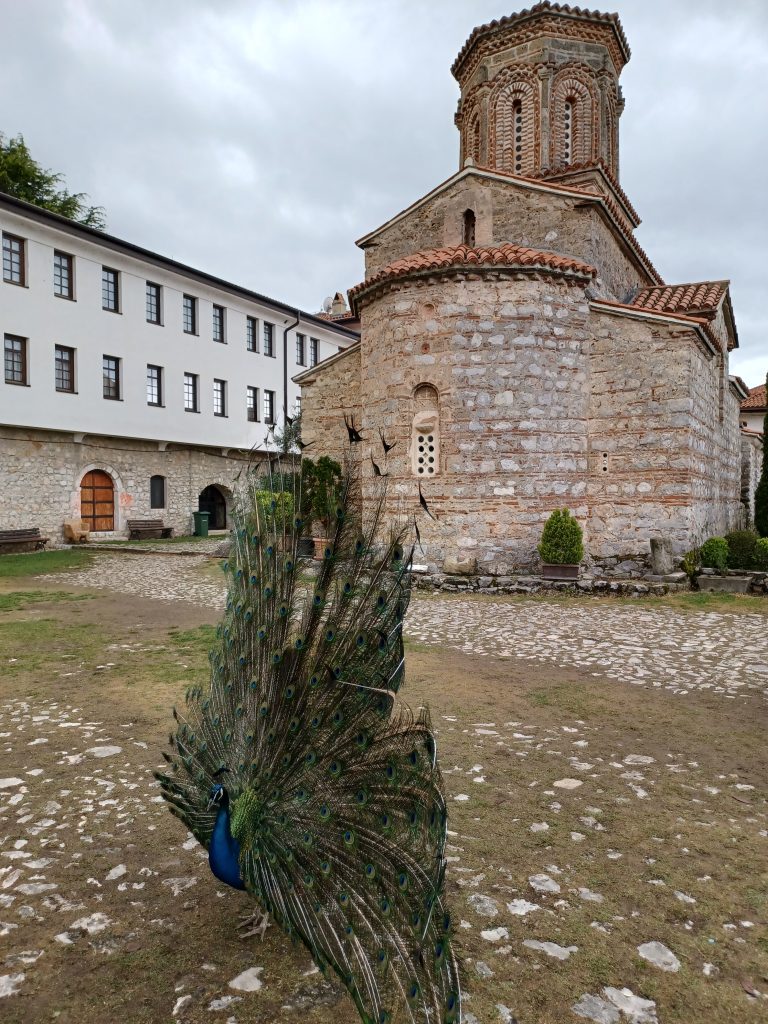
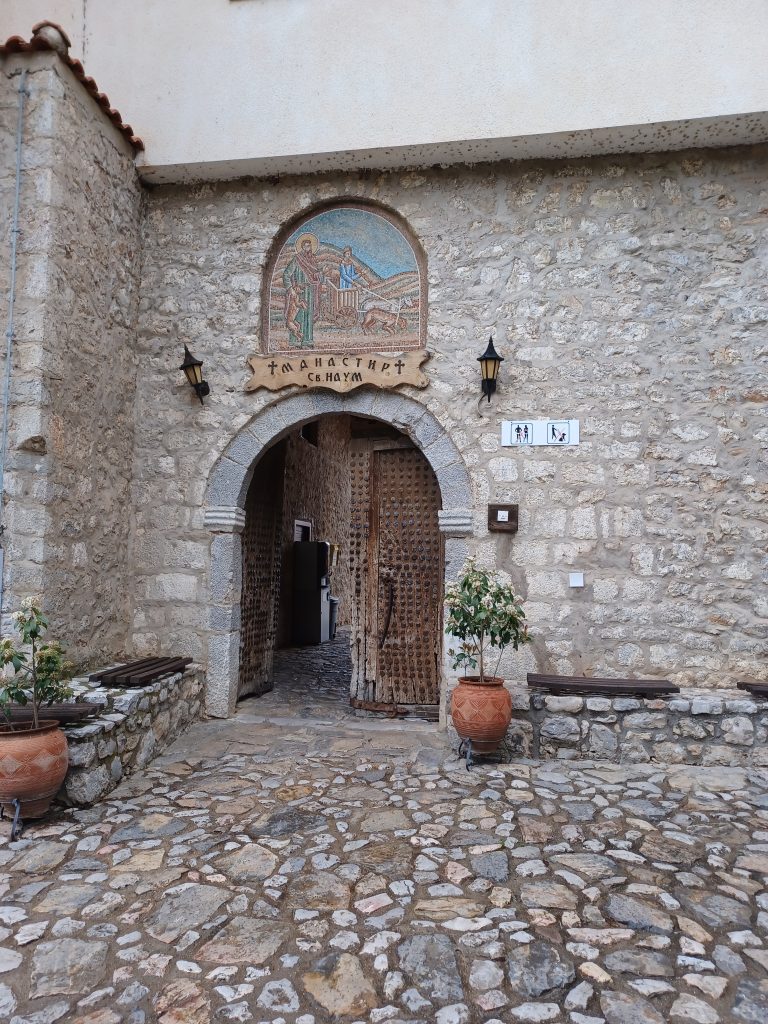
The monastery itself consists of a central church with two hexagonal towers on top. St Naum dedicated the church to the Holy Archangels St Gabriel and St Michael. “The monastery once belonged to Albania”, we are informed. “From 1912 -1925”. Their then King Zog ceded it to Yugoslavia in 1925.
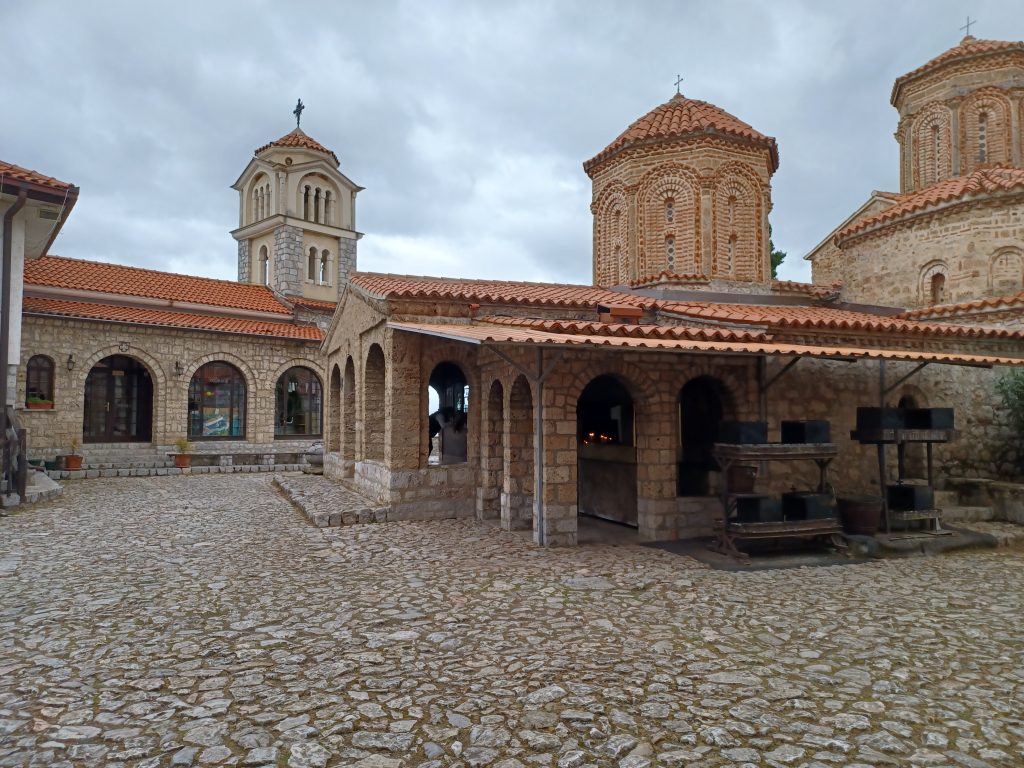
We enter. Inside the church the focal point is a wooden iconostasis, of which the central part consists of the gilded ‘Beautiful gates’. The guide explains that, in an Orthodox church, in accordance with a set of rubrics governing the layout, on either side of the beautiful gates the Virgin is always on the left. To her left are angels representing the church, while on the right side the first icon is of Jesus, and the second of John the Baptist. Icons, which date from the early 1700s, and frescos from the 1900s smother the ceiling and walls and we actually have room to view them all without hordes of others blocking the view. Then the ultimate moment as we each in turn file to kneel over St Naum’s sarcophagus to hear his heart beating. Hmmm. Well, I don’t hear his beating heart. What would I have done if I had?
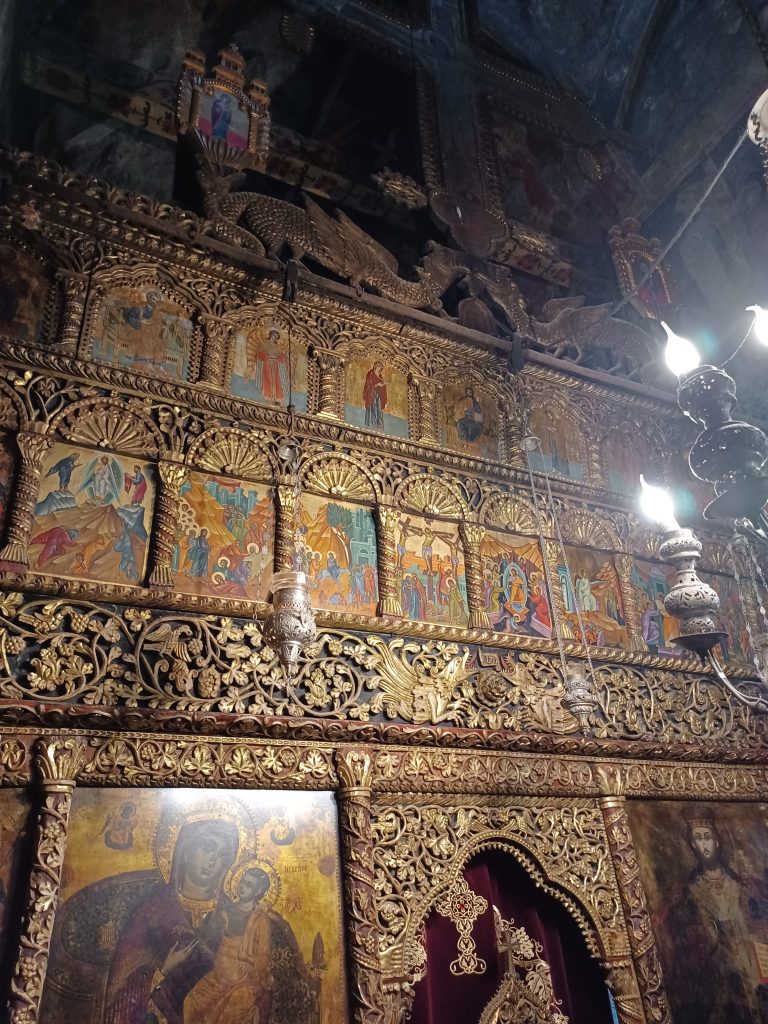
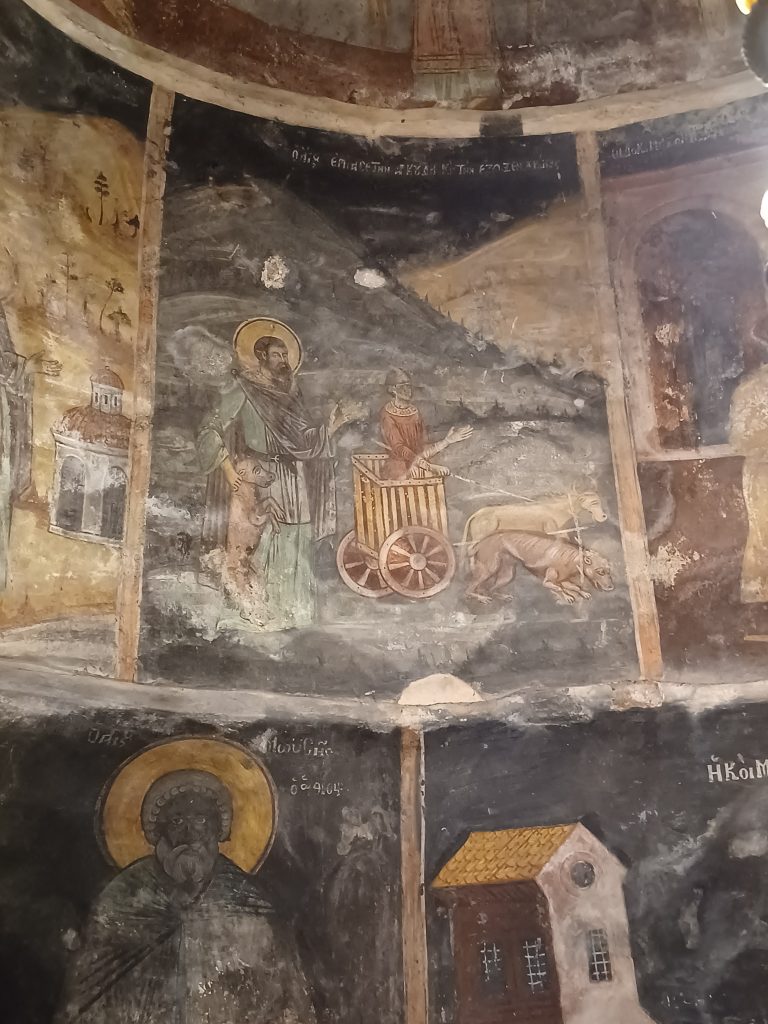
I exit into the daylight and wander down the path past the boats moored on the Drim stream where rides are offered – paddle boats as engines are not allowed to pollute the waters. Bit too cold to be tempted. Cross over the stream, which gushes from under the hills and runs into Lake Ohrid. I thaw out in a café with a large cup of coffee, and hang out with one of the group members for a bit before taking the bus back to Ohrid along the serpentine roads. The driver handles the steep bends with great panache. He passes another coach, leaving about an inch between them.
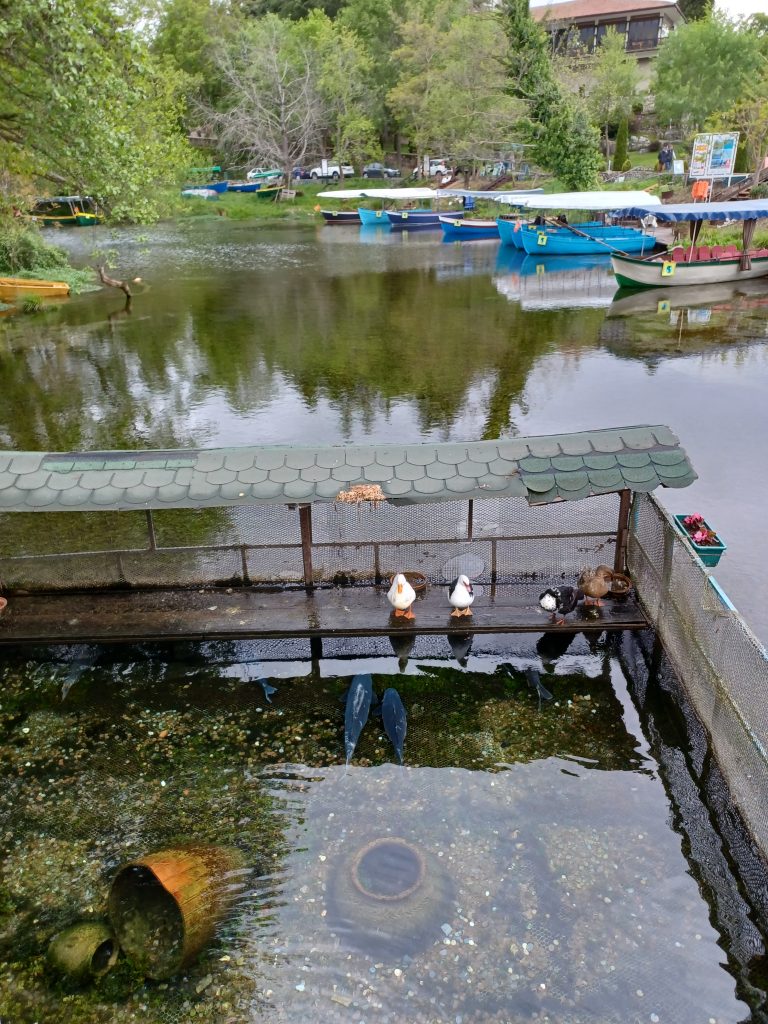
Everyone claps. He looks surprised. “He can do this with eyes closed”, comments our guide.
Ohrid
In the old city of Ohrid a very large Macedonian flag flies on a tall flag pole in the middle of the lake frontage. Along the front are several statues, including the ‘Catcher of a Cross’, a memorial to epiphany. An old tradition it was, apparently, to throw a cross into the lake on that day, January 6th and the person who retrieved it would be blessed with good luck for the year. Another statue features Saints Cyril and Methodius sitting amongst the red blossoms and bushes and grass round about. Very busy here today as it is the day before Orthodox Easter. At the flag pole we pick up a university professor, our local guide. Flamboyant sort of chap with a good sense of humour. “Two thirds of the lake is Macedonian, one third is Albanian”, he informs us. “This part is a UNESCO site”. The lake, he continues, is the second largest, after Lake Baikal, in Europe, but it is the deepest and the oldest. OK. There are fish in it, but fishing is limited as the lake is preserved. Even so many local restaurants appear to serve up the local trout.
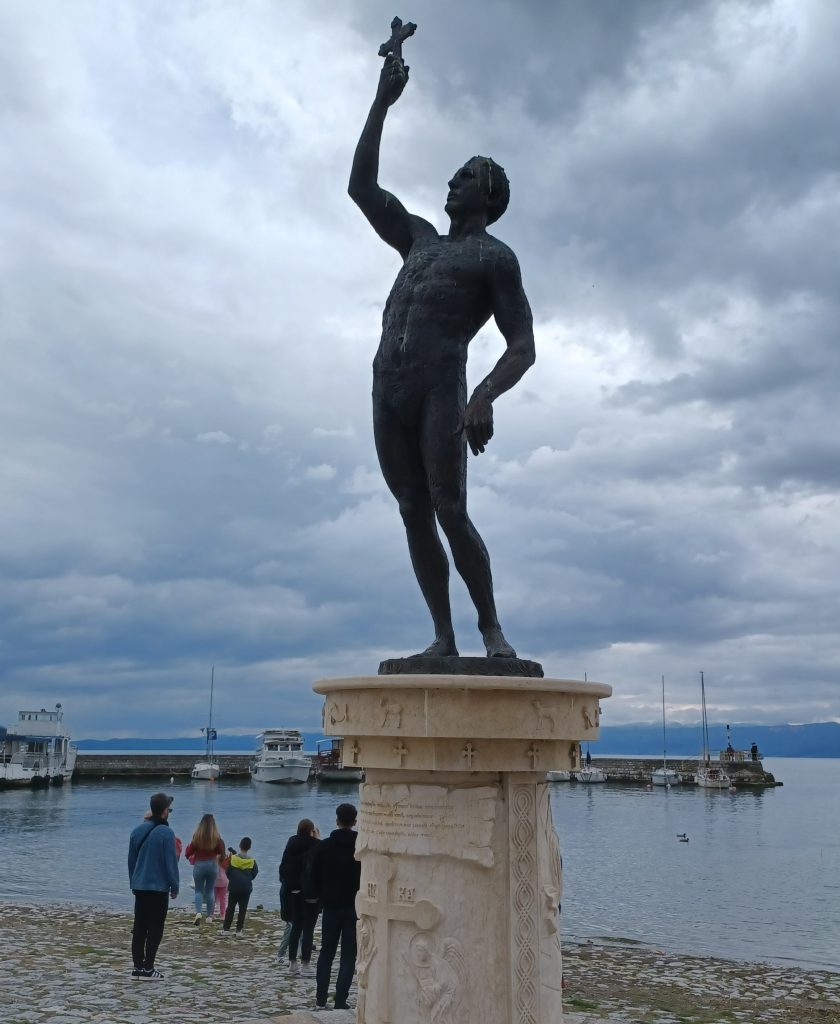
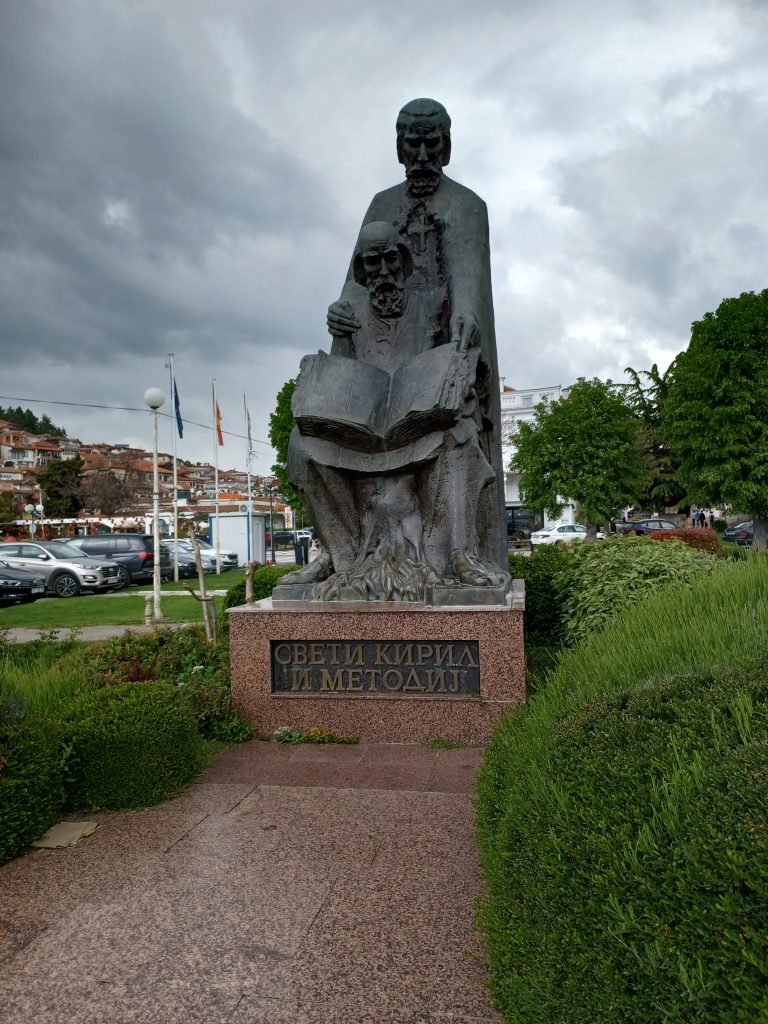
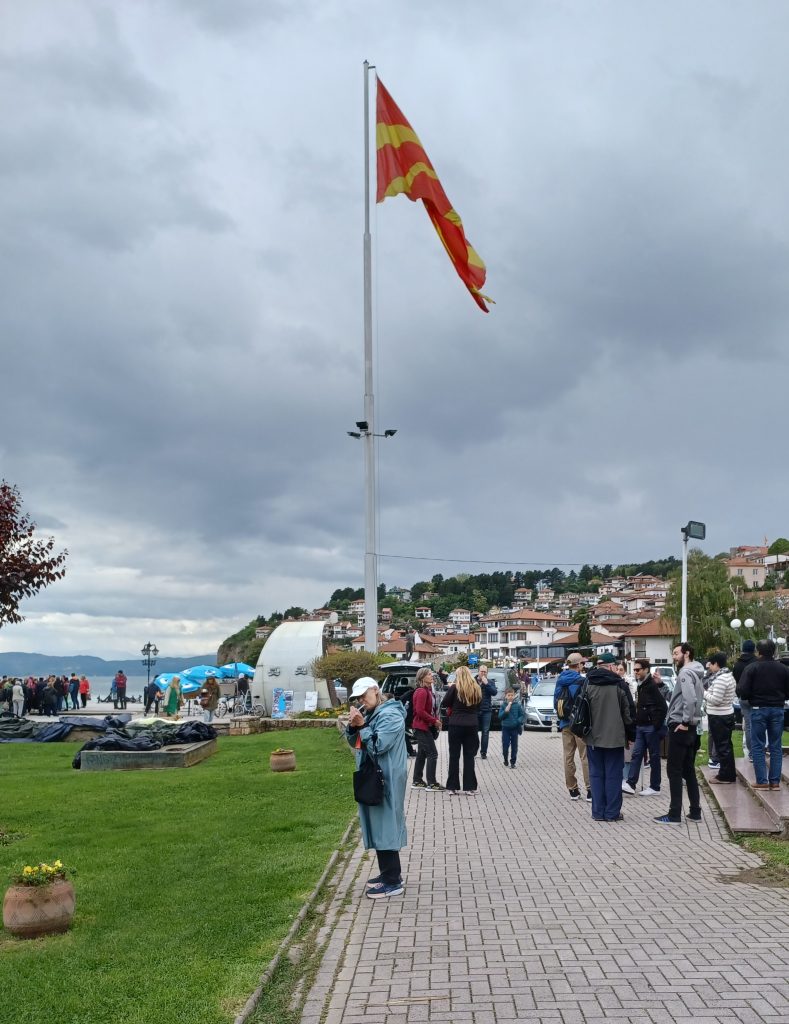
From the lake we head up some steps within the old walled town to observe the 11th century church of St Sophia. Same architectural style as that of St Naum, it seems to me, with small brick hexagonal towers. The Prof then leads us on a circuitous route up and down cobbled streets pointing out sites of interest.
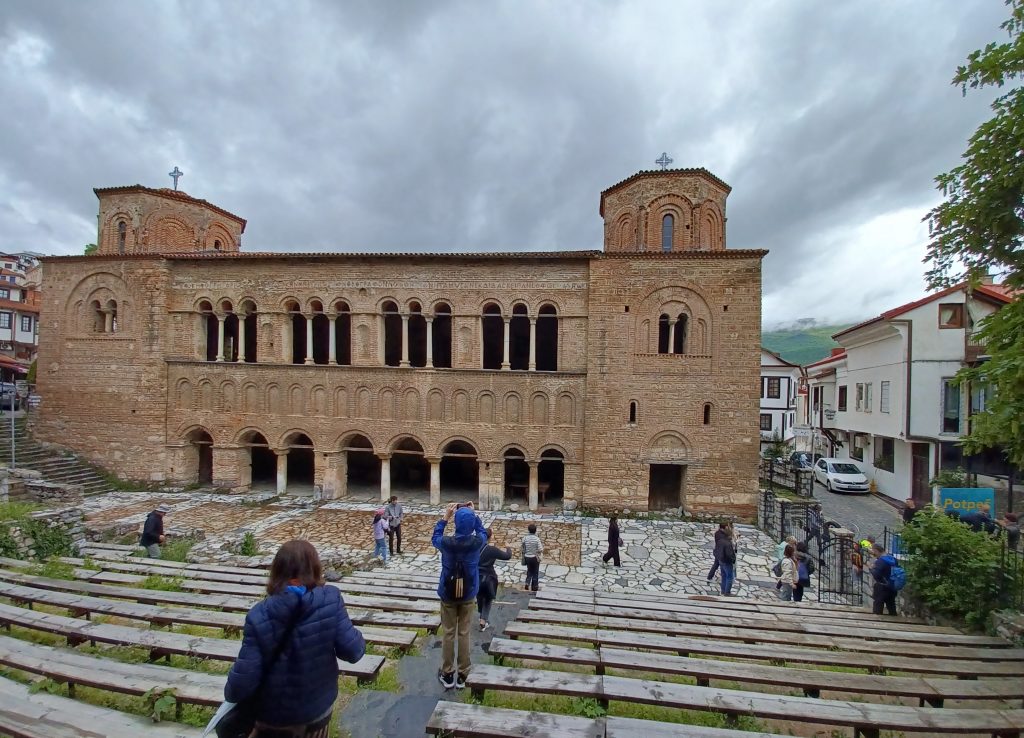
There are a lot of cats here too, almost as many as in Kotor. As many photographs are taken of our feline friends as of the monuments.
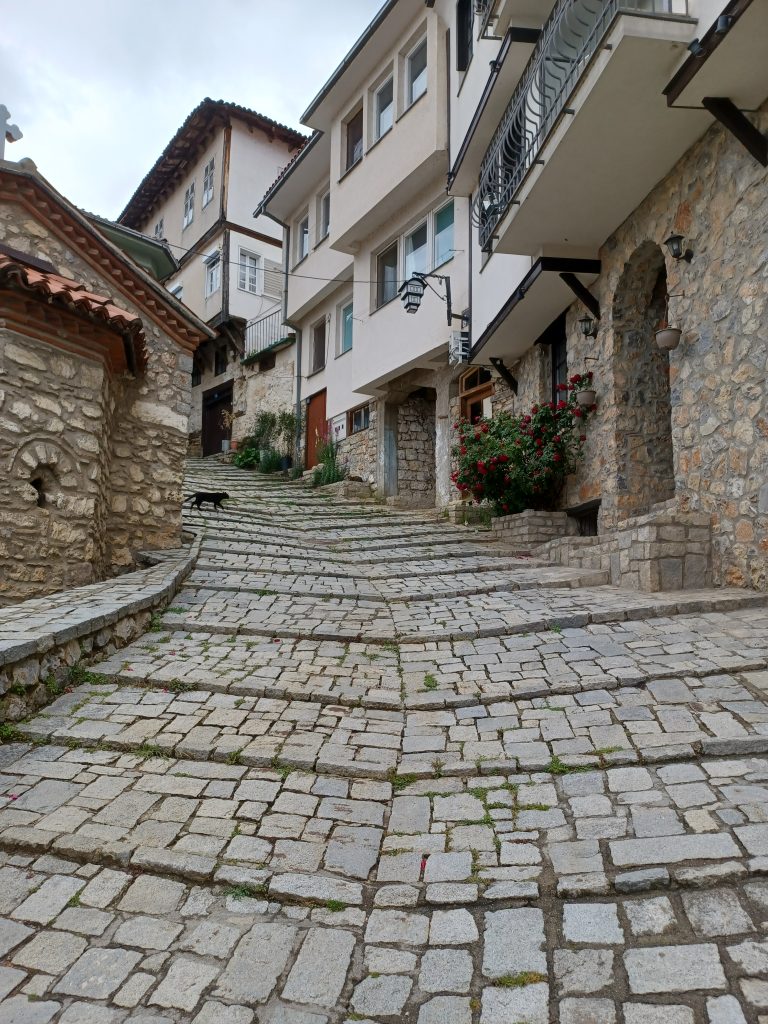
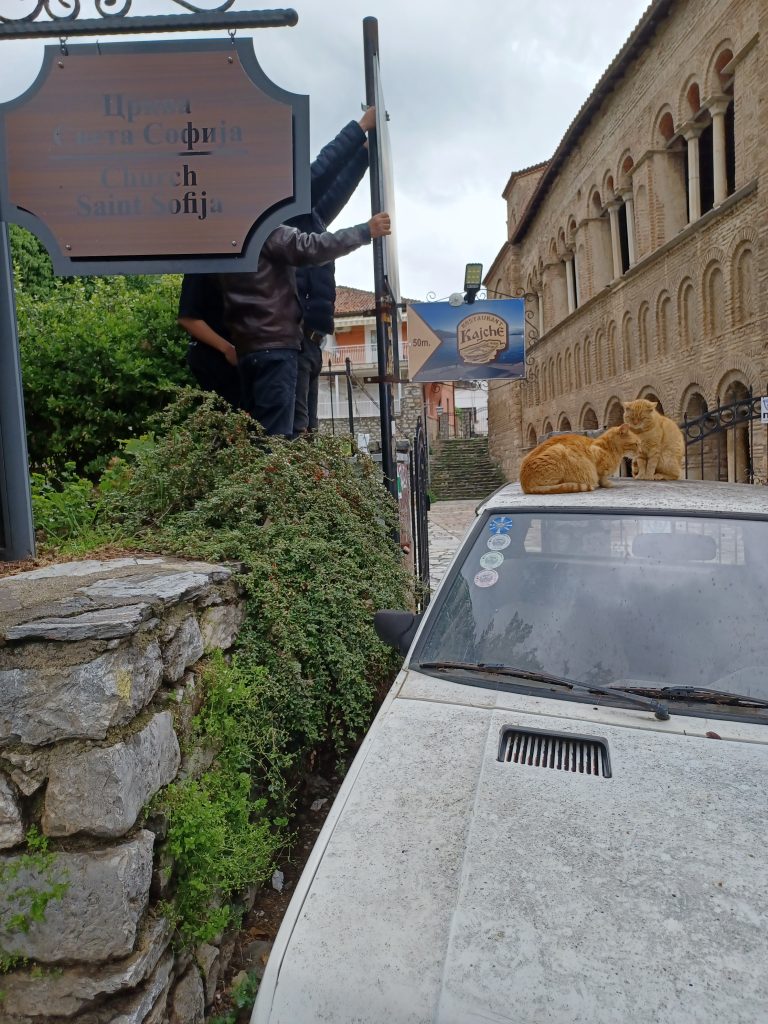
After wandering about awhile, the Prof leads us into ‘The National Workshop for Handmade Paper,’ which, as advertised, is a paper making workshop-cum-museum in which resides a replica of a fifteenth century printing press. In the workshop, he dons the outfit (authentic ostensibly) of Gutenberg, he who designed the printing press. Dressed in soft black hat and gown and standing in front of said press, he begins his spiel. “Paper making in this region began in the Monastery of St Naum in the sixteenth century and this”, he claims, “is the third Gutenberg press in the world. The original is in Vatican City”. The paper is made from sawdust mixed with water to make a pulp, I understand, and is based on the old Chinese craft dating back to 200 BC. He produces a print with a flourish. Big grin. I buy a print of a map of the Balkans on a yellowish background with coats of arms dotted about, while one of our party, a doctor, purchases a print of the Hippocratic oath in Greek.
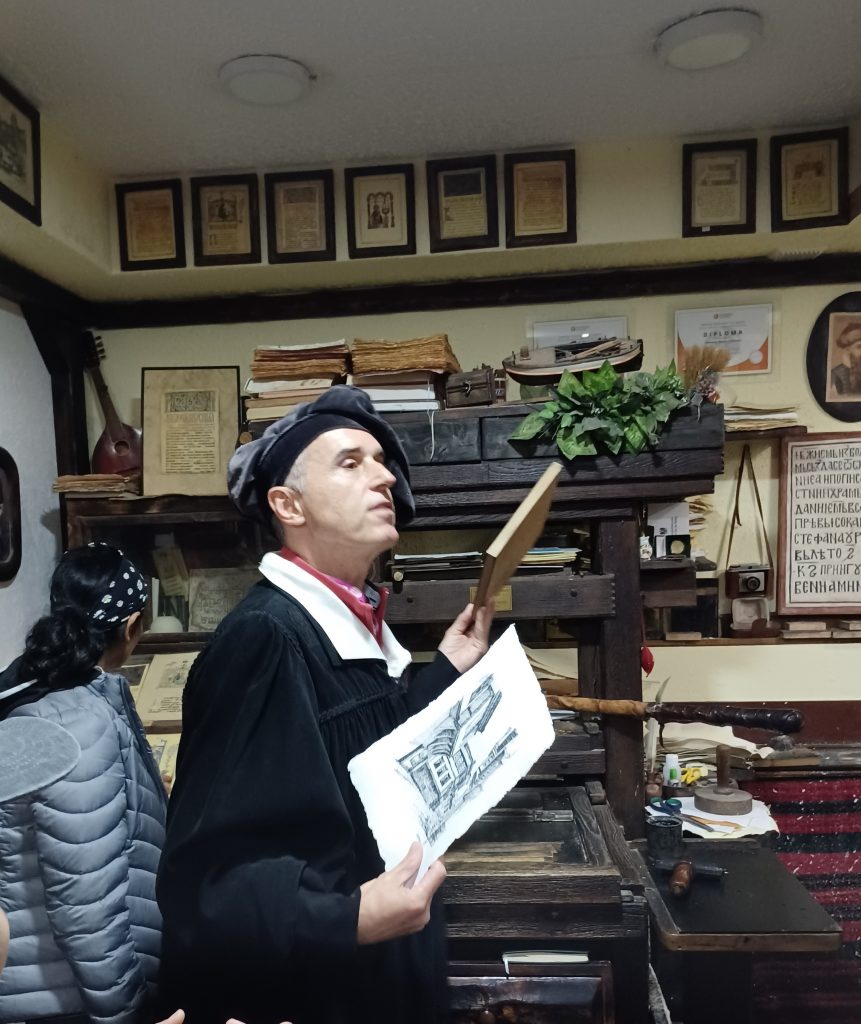
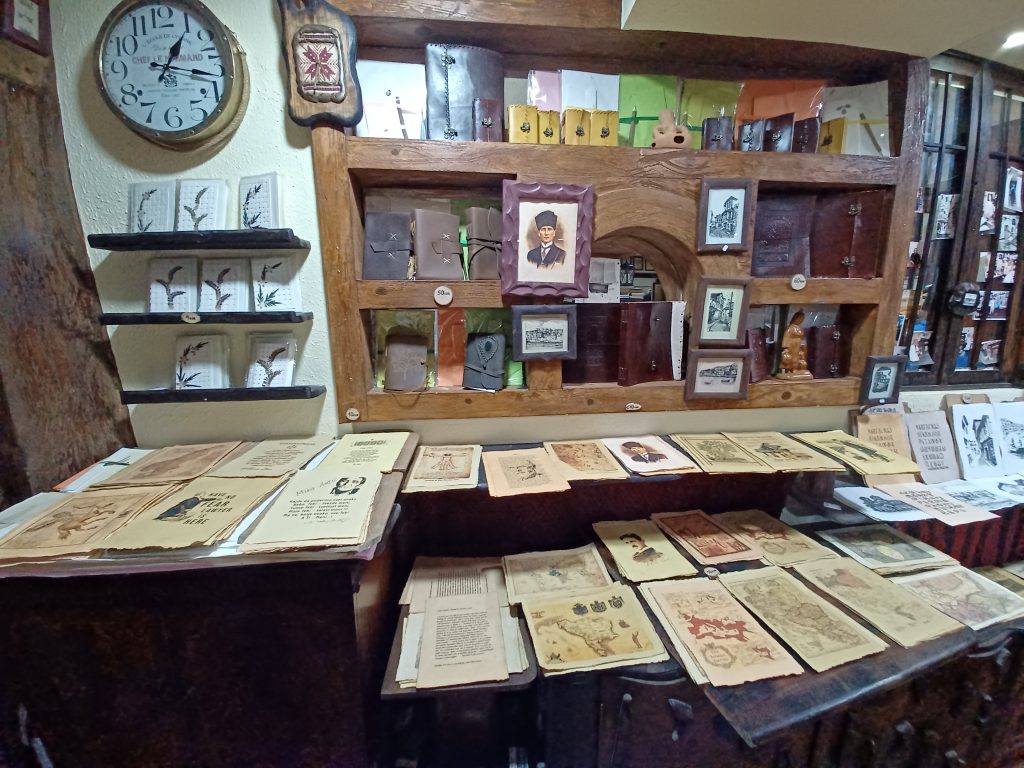
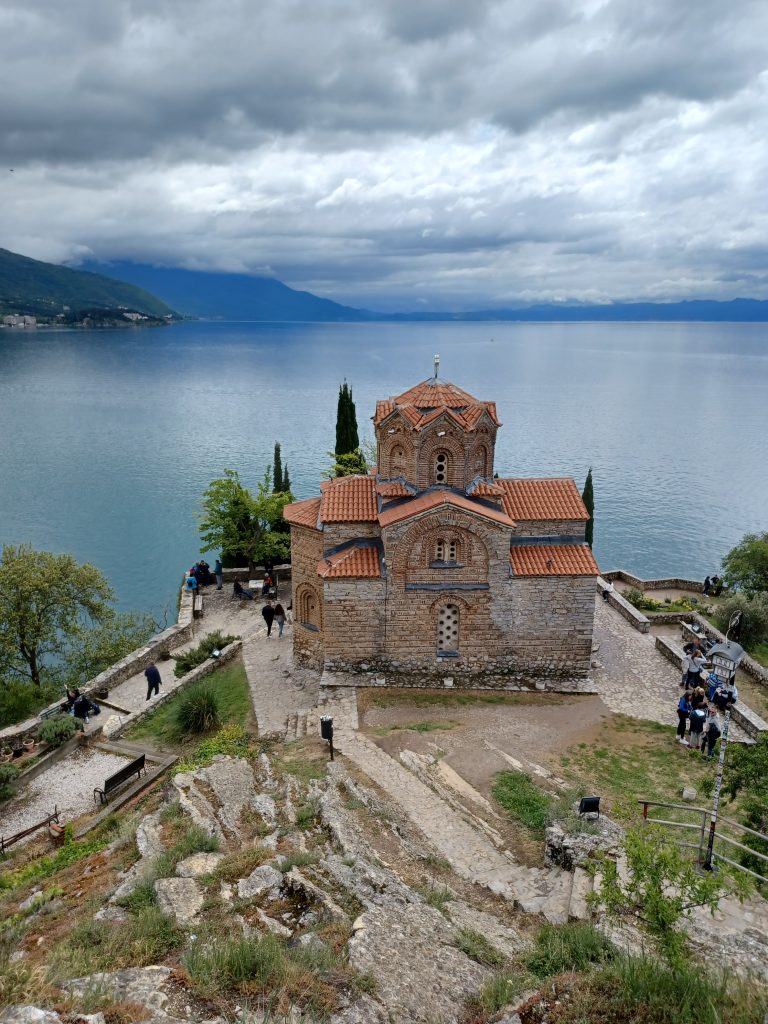
There follows a longish walk following the Prof along shaky boardwalks past a cove with small fishing boats and up steep steps to the thirteenth century church of Sveti Jovan (St John). Everyone walks up the rocky slope behind the church to view it from above. Lake Ohrid, now glistening with a ray or two of sun, provides the backdrop. Cameras click. Staggering view. Those early church builders certainly had an eye for the perfect location. Linger awhile.
“Anybody want to take a boat back?” enquires the Prof as we descend the way whence we have come. Absolutely! He fixes it. Old pal of his is the skipper. So off we motor to the Ohrid promenade by boat. This is more like it. Bit of the cool fresh wind in the hair as we chug across the rippling water of the lake for twenty minutes or so. Disembark and find a waterfront restaurant for lunch and glass of the heavenly Vranac.
Skopje
We head now for Skopje. It is a two and half hour journey. Several Albanian flags are flying by the roadsides en route. Many Albanians live in this area and we are told that many of them are in government resulting in the fact that the roads between here and Albania are better maintained and constructed than elsewhere! Some tensions, I gather. In 1913, Albania lost a lot of its territory to the other countries of the Balkans. This may explain why there are many ethnic Albanians living here as well as in Bosnia and Herzegovina and Serbia. Another source of tension is that Albanians tend to be Muslims, while North Macedonians are Orthodox or Roman Catholic. Anyway, we approach Skopje amongst peaceful pastoral scenery of grassland and trees and mountains. “A good defensive area during the days of the Roman empire”, says our guide.
It is Orthodox Easter Sunday. We check out early from the hotel and meet the local guide at 0815. A few stray dogs are in attendance. We are the first tour group in Skopje today. Not surprising. Most people are at home celebrating Easter with their families. No shops are open yet as we, with dogs, file down a street lined with large buildings, decorated in the Art Nouveau style, towards a large square. Centre stage is the monumental equestrian statue of Alexander the Great. The statue itself is on a splendid plinth decorated with reliefs of Macedonian soldiers and great bronze lions round it. A triumphal arch is located on one of the roads radiating from the statue. Nondescript, this square used to be. Jaw dropping might be a more fitting description today. The dogs are loping about. A considerable amount of barking ensues when a rival group of dogs from elsewhere turns up for a scrap. Guide quite nonchalant.
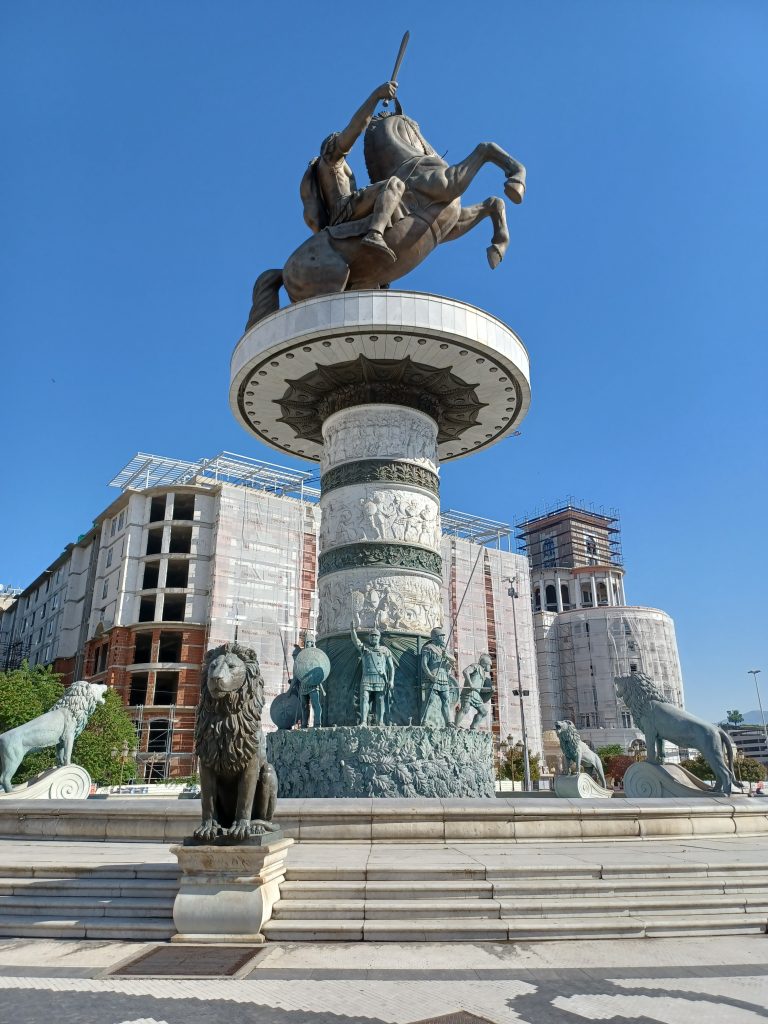
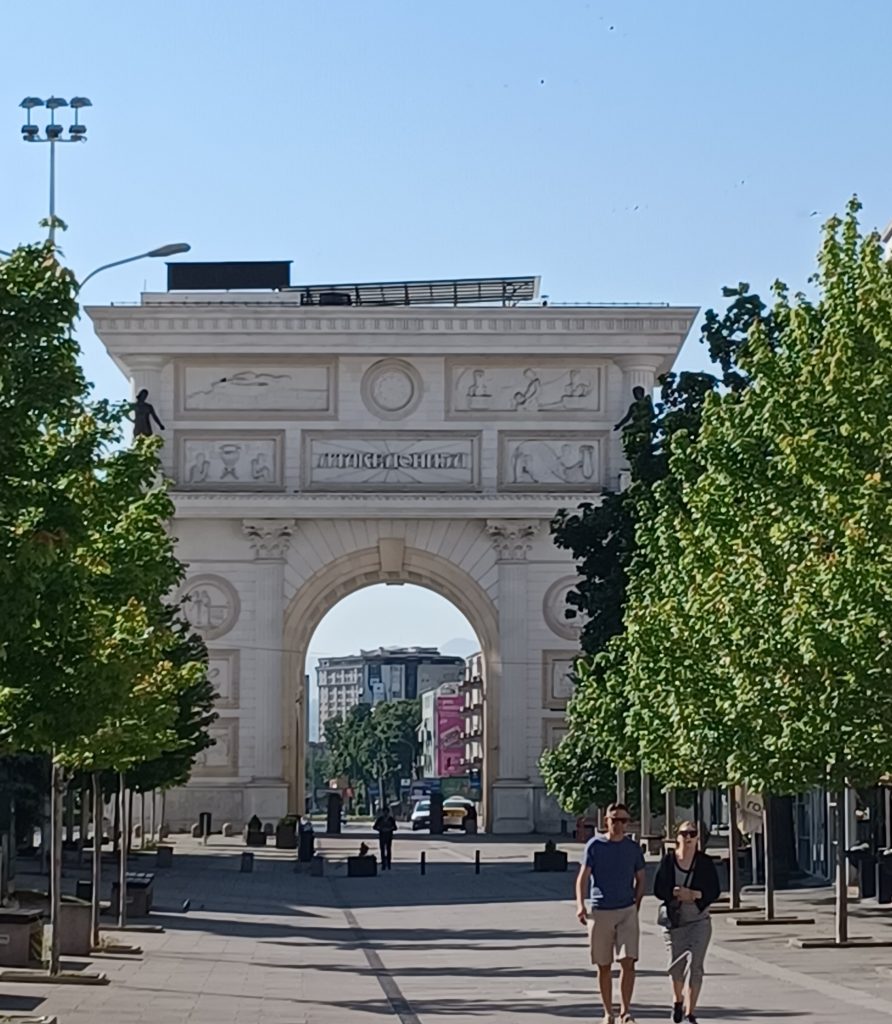
She tells us that the past president implemented a scheme named ‘Project 2014’ to construct these huge glistening buildings in the neoclassical style. Opposition to said project has dwelt on the great expense incurred, and when a new president was elected, the project stalled. Hence a few unfinished monster buildings shrouded in scaffolding are dotted about, including a rather nice new bell tower with a crane overhanging it next to an Orthodox church. Future elections may decide on the fate of these. Seems a shame to me not to finish the unfinished. The buildings are certainly fit for a capital city. Imposing and grand and beautiful.
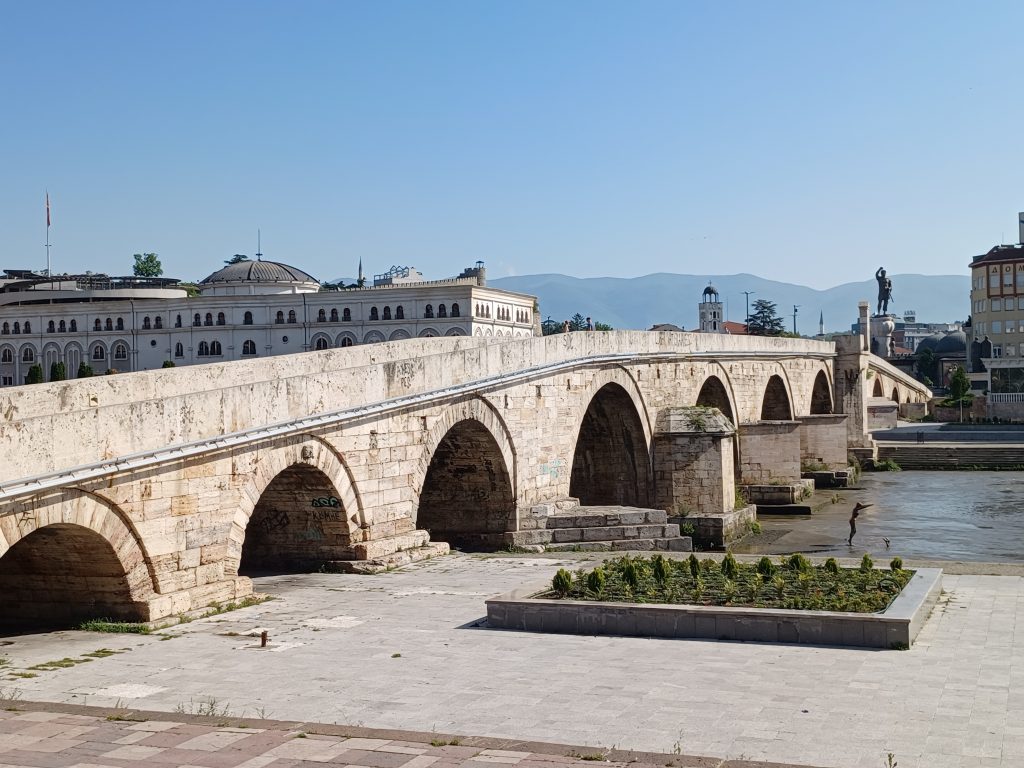
A lovely old Ottoman stone bridge straddles the river Vardar between the square and the opposite bank. There was once a Roman bridge standing here, when the city was called ‘Scupi,’ the guide tells us. This was replaced by a stone Byzantine bridge, later rebuilt and strengthened by the Ottomans.
“The old bridge was still standing after a devastating earthquake in the centre of Skopje in 1963”, we are told. “It measured 6.1 on the Richter scale and the bridge was the only structure left intact except one new building. This one had been built using a steel framework”. Otherwise, the whole city was flattened. Happily, “the earthquake struck in the middle of the scorching summer when many residents were away. They returned to rubble”. Mother Teresa’s house was destroyed too. There are several memorials to her in Skopje. She lived the first eighteen years of her life here, the guide tells us, but was of Albanian parentage, so both countries lay claim to her. She then left Skopje for India as a missionary and died in Calcutta in 1997. She was canonised by Pope Francis in 2016.
We amble over the old bridge upon which more dogs snooze in the shade. On the other side, there are more impressive government buildings with enormous columns in front. Behind them is the Ottoman quarter. The old Ottoman fortress looks down upon us from the near distance, while another massive statue ‒ without horse ‒ of Philip II of Macedon, father of Alexander, stands, mighty in form, fist in the air. A fountain between him and the bridge features three statues around its base of Olympia, Alexander’s mother, first clutching her pregnant stomach, then breast feeding her baby, then caring for her young son. Rather more touching.
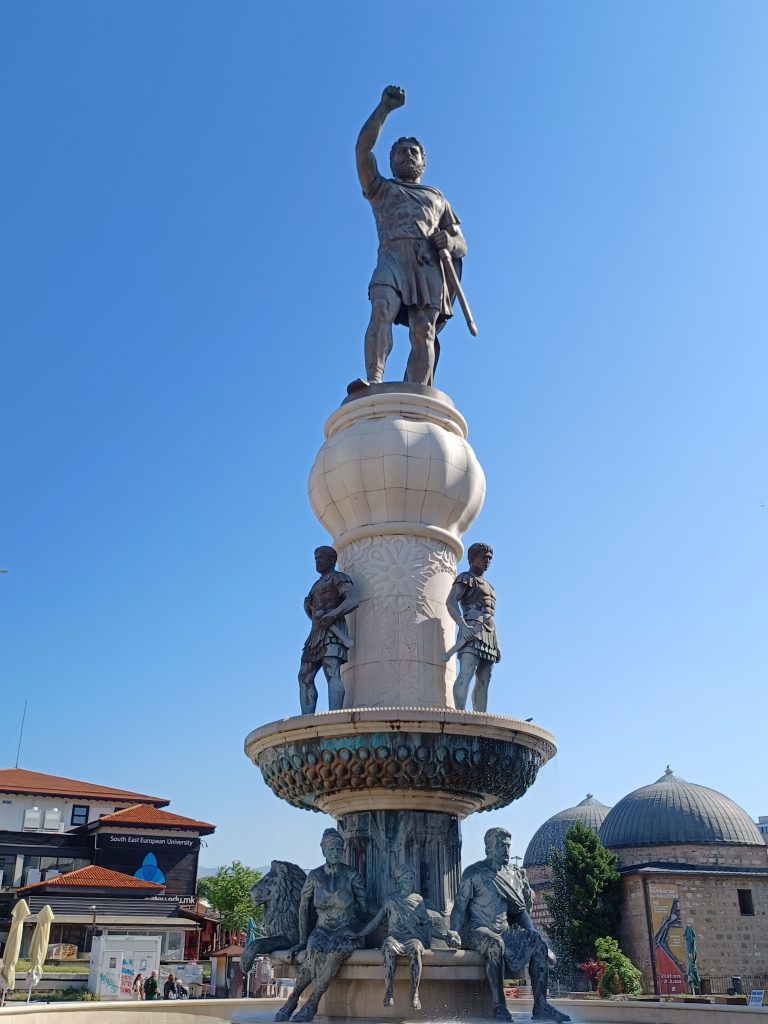
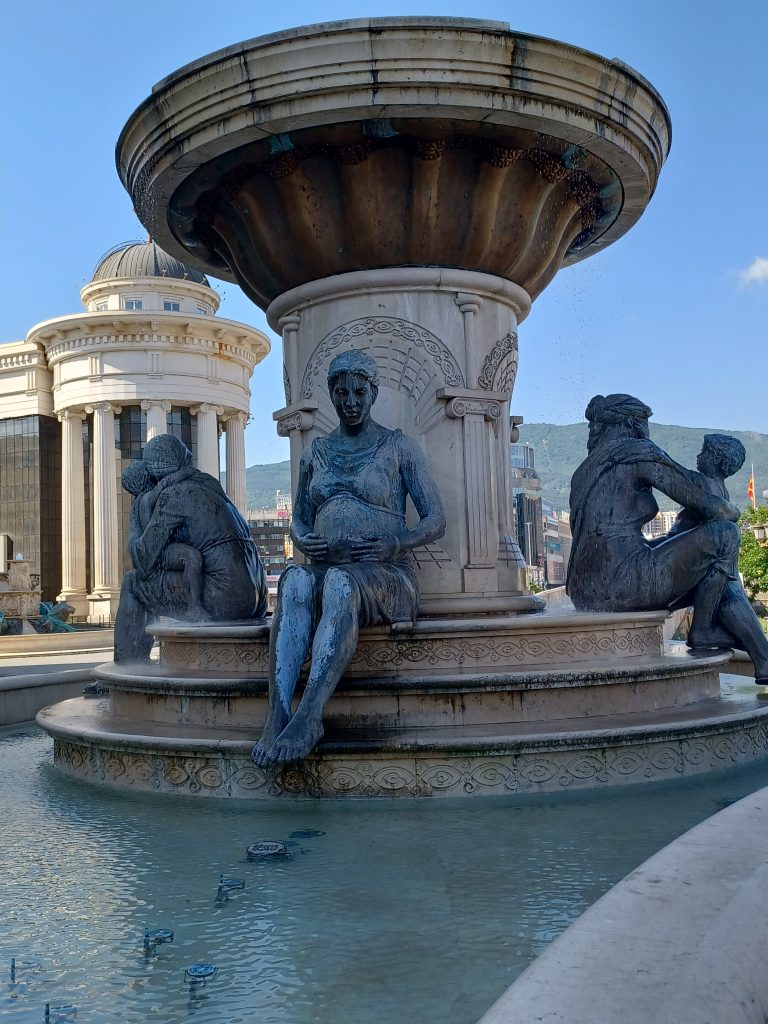
Two other gleaming white painted pedestrian bridges cross the River Vardar here and are adorned with statues all the way along them. One is named ‘the Bridge of Art’ with recent artists, composers, educators, writers and actors along it. The other is named the ‘Bridge of Civilisations’ dedicated to famous people in history. I wander slowly across them both. Elsewhere are statues of Saint Kliment with Saint Naum, and Saints Cyril and Methodius. A large wooden galleon, a hotel, sits on concrete pillars in the river. There is another one further on. Not sure what that is for. All rather delightful.
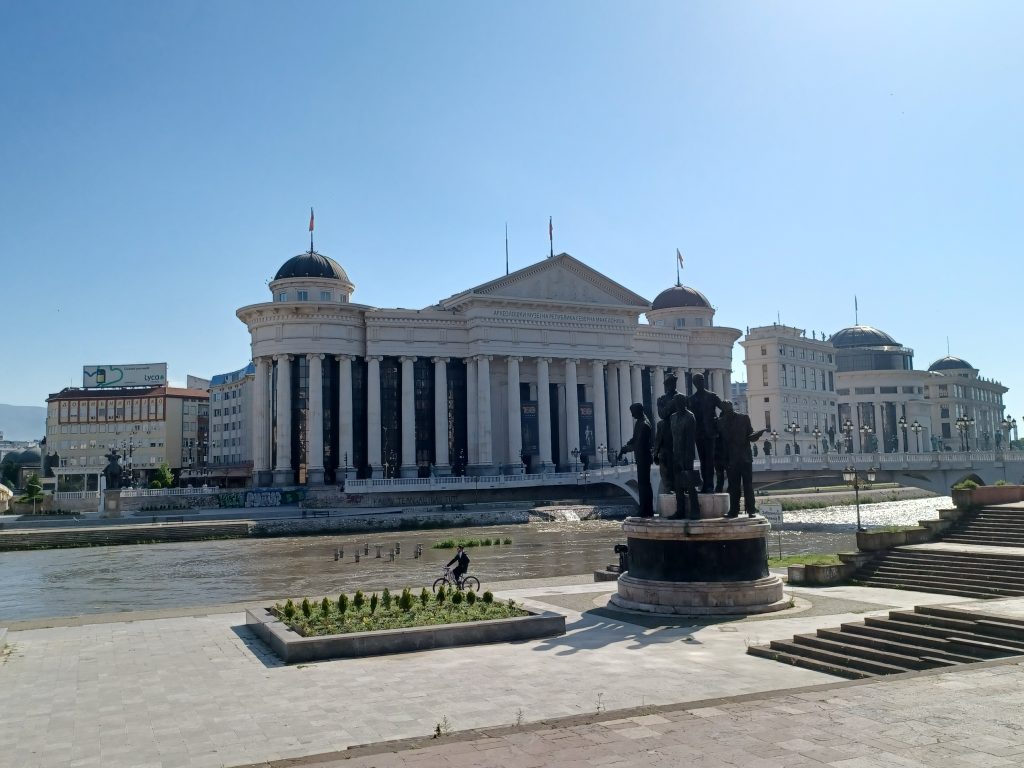
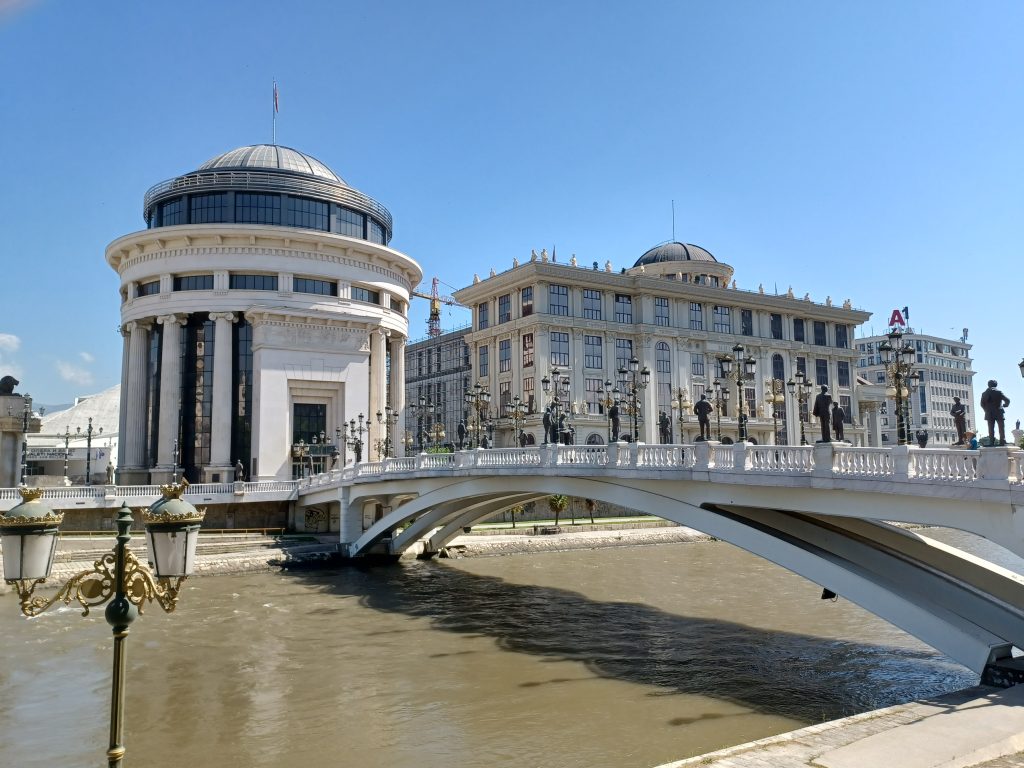
A few of us wander up to the Ottoman fortress in our free time. Not sure it adequately compensates for the hike up. It is a bit shabby and uncared for. I suppose it has witnessed many skirmishes which have led to manifold reconstructions. It started life in the sixth century as a Byzantine fort. I stumble through the long grass, where remnants of ancient obstacles are hidden, to the walls and view the town, along with the 66 feet high Millennium Cross on Mount Vodno opposite, through its arrow slits and crenellations. The Ottomans, as elsewhere in the Balkans, ruled here for 520 years.
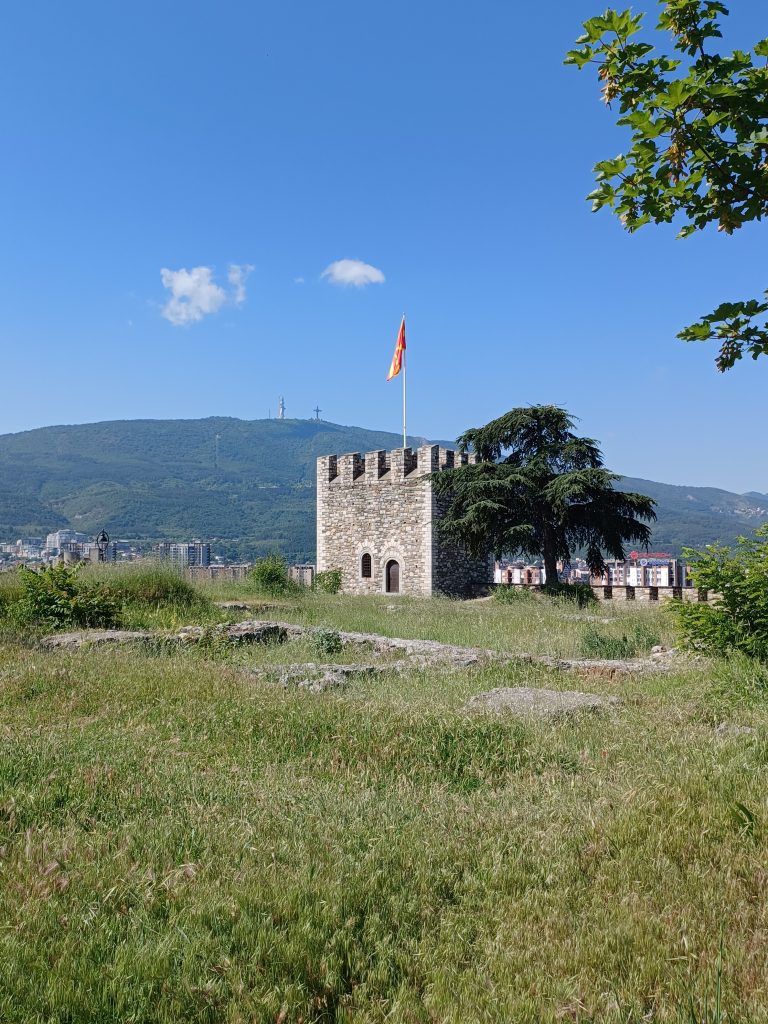
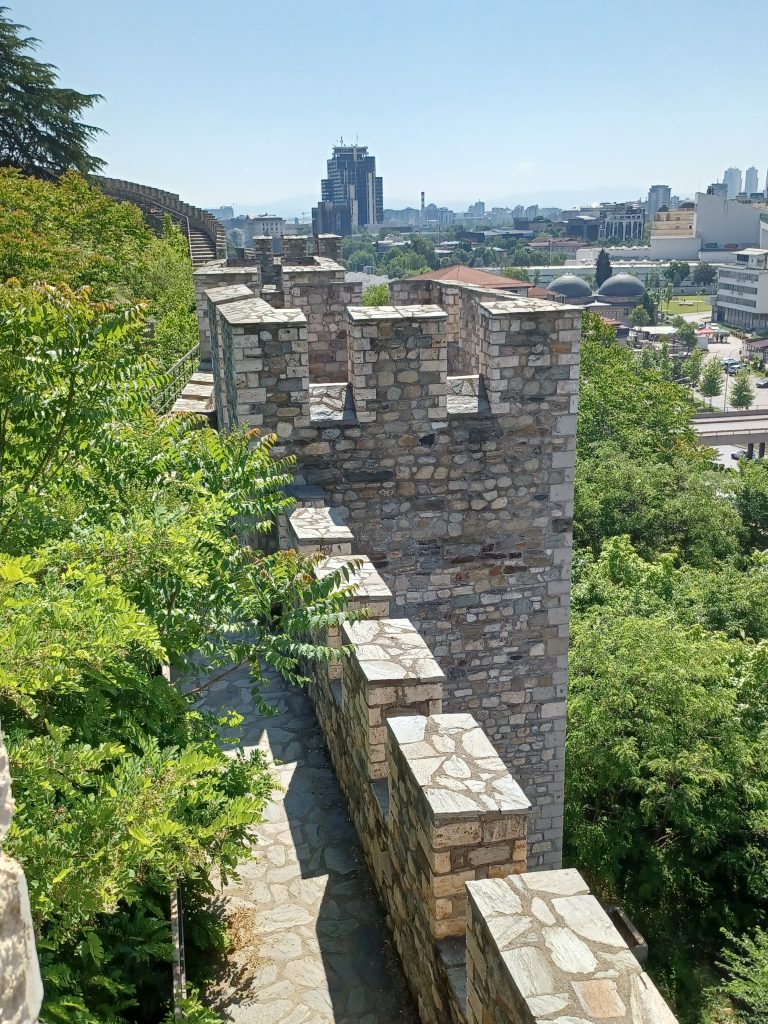
Unlike some of the other Balkan countries, North Macedonia left the former Yugoslavia peacefully in 1991 to become an independent republic. The people wanted their country to be known as ‘Macedonia’ but the Greeks kicked up a fuss, owing to having their own province of Macedonia. Thus ‘North’ was added to the country’s name and it was recognised by the UN as a sovereign state in 1993.
The tour ends back in Sofia, Bulgaria, on Orthodox Easter Monday, a public holiday, once banned by the communists. I reflect. It has been an eye-opening journey. A mix of the grim and the glorious, splendid scenery and remarkable history. Good fun too.

Leave a Reply